Table Of Content
- Choosing the Right Tent for Challenging Environments
- Consider the following
- Factors to weigh when selecting your tent
- Expert Tip – Advanced Tent Setup Techniques
- Why does tent selection matter in challenging environments?
- Essential Tools and Equipment for Advanced Tent Setup
- Tent Repair Kit
- Lightweight Mallet or Hammer
- Guylines and Tensioners
- Ground Cloth or Tarp
- Understanding the Terrain: Site Selection Tips
- Consider the Ground Conditions
- Look for Natural Windbreakers
- Avoid Low-Lying Areas
- Assess Sun Exposure
- Check for Potential Hazards
- Advanced Tent Pitching Techniques for Windy Conditions
- Sturdy Foundation
- Strategic Wind Direction
- Tactical Guyline Setup
- Reinforced Tent Structure
- Securing Your Tent: Mastering Guyline Setup
- Understanding the Importance of Guyline Setup
- Tips for Mastering Guyline Setup
- Conclusion
- Dealing with Rain and Waterproofing Your Tent Effectively
- Sealing Cracks and Seams
- Invest in Quality Tarps
- Strategic Site Selection
- Setting Up in Extreme Environments: Snow, Deserts, and More
- Adapting to Snowy Terrains
- Conquering Desert Conditions
- Frequently Asked Questions (FAQs)
Welcome, avid campers and outdoor enthusiasts! Today, we delve into mastering advanced tent setup techniques in challenging environments. As seasoned adventurers, we understand the importance of having the skills and knowledge to pitch a tent effectively, no matter the conditions.
When Mother Nature throws her toughest challenges your way, the ability to efficiently set up your shelter can make all the difference. Whether camping in a windy mountain pass, a rainy forest, or a snow-covered terrain, having the expertise in advanced tent-pitching techniques can elevate your camping experience and ensure your safety and comfort.
Mastering these advanced skills—from anchoring your tent in rocky terrain to effectively utilizing guy lines in windy conditions—is essential for every outdoor enthusiast. By honing these techniques, you enhance your camping experience and boost your confidence in tackling diverse landscapes and weather scenarios.
Join us on this educational journey as we unravel the intricacies of advanced tent setups in challenging environments. Equip yourself with the knowledge and skills needed to thrive in the great outdoors, no matter what obstacles come your way.
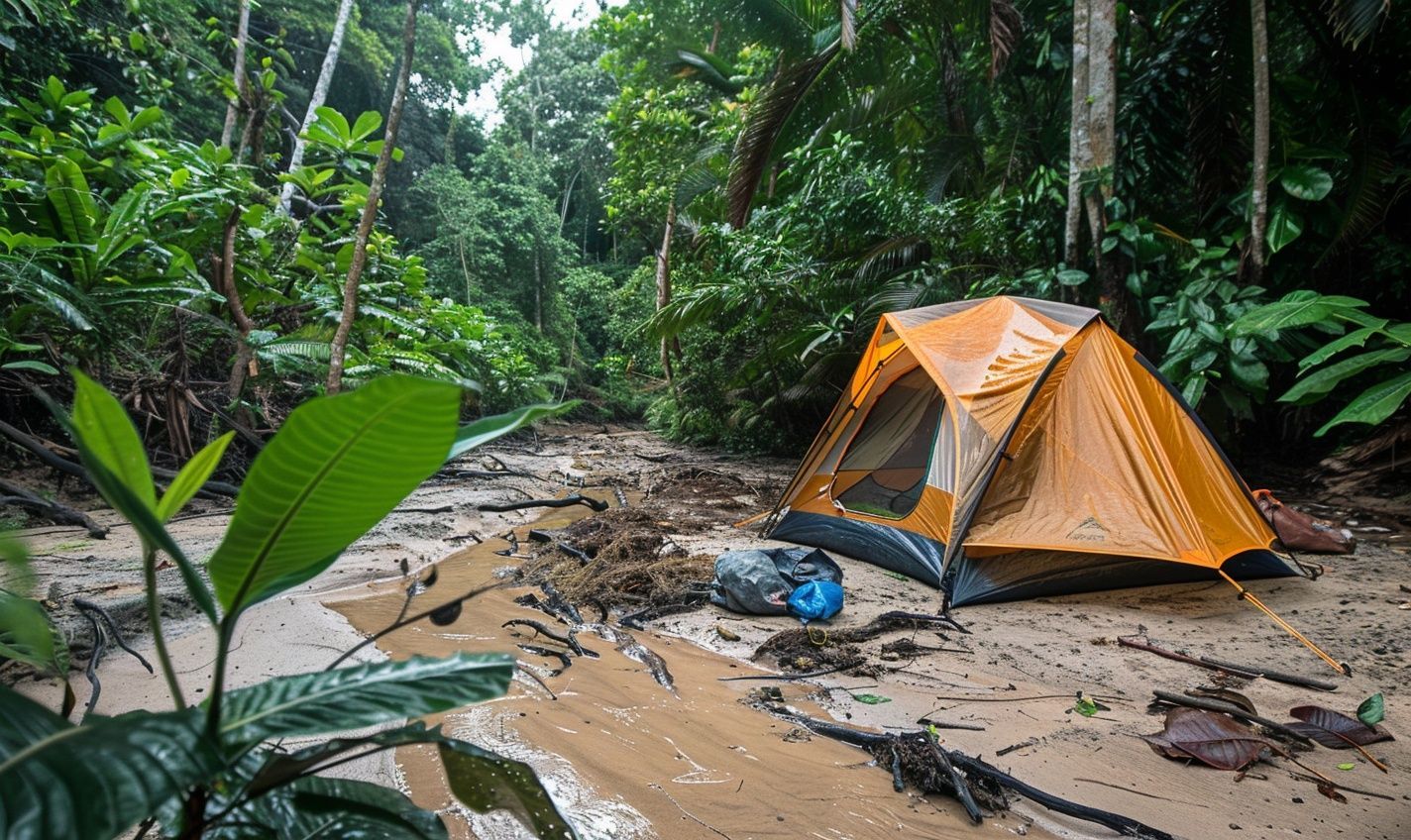
Choosing the Right Tent for Challenging Environments
When venturing into the great outdoors, your tent is your home away from home. It becomes your sanctuary, your refuge against the elements. However, not all tents are created equal, especially when facing challenging environments. So, how do you ensure you have the proper shelter for your adventures?
Consider the following:
Before embarking on your journey into the wild, take a moment to ponder what conditions you may encounter. Will you be camping in windy, rainy, snowy, or desert environments? Each setting requires a tent with specific features to ensure comfort and safety.
Factors to weigh when selecting your tent:
- Durability: Opt for a tent of robust materials that can withstand harsh conditions.
- Weather Resistance: Look for waterproof and windproof tents to keep you dry and secure.
- Ventilation: Proper airflow helps prevent condensation buildup, especially in humid environments.
- Weight: Consider the tent’s weight when backpacking to remote locations.
Expert Tip – Advanced Tent Setup Techniques:
- Practice pitching your tent in your backyard before heading out. Familiarity breeds efficiency.
- Utilize guyline techniques to anchor your tent securely, especially in windy areas.
- Adjust your pitch for optimal drainage and wind resistance.
Why does tent selection matter in challenging environments?
And when the wind howls like a hungry wolf or the rain pelts down like a torrent, your tent becomes your fortress. It protects you, shelters you, and offers solace amidst the raging elements.
So, choosing the right tent for challenging environments is not just a matter of utility but survival. With the proper shelter, you can brave the fiercest storms, face the harshest conditions, and emerge unscathed, ready to conquer nature’s trials.
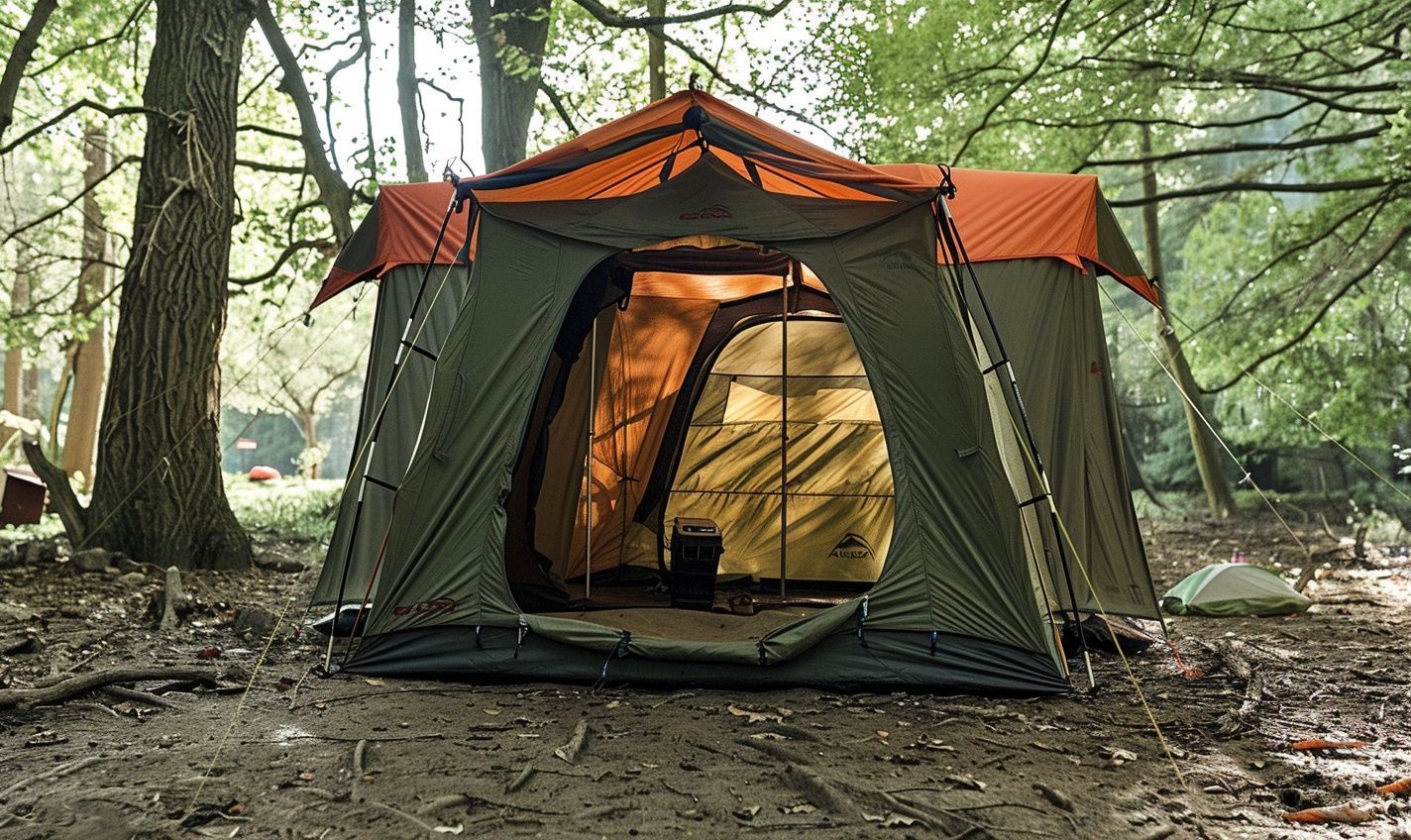
Essential Tools and Equipment for Advanced Tent Setup
If you’re gearing up for an outdoor adventure in challenging environments, having the right tools and equipment can make all the difference in how smoothly your tent-pitching experience goes. Let’s take a look at the essential items need:
Tent Repair Kit
A trusty tent repair kit can save the day when you encounter unexpected tears or damage to your shelter. It’s like a first aid kit for your tent!
Lightweight Mallet or Hammer
When the ground is tough and your stakes won’t budge, a lightweight mallet or hammer can help you drive them in securely.
Guylines and Tensioners
Extra guylines and tensioners can provide added stability in windy conditions. They act as the tent’s lifelines, keeping it grounded when the gusts pick up.
Ground Cloth or Tarp
Protect the bottom of your tent from sharp rocks, wet ground, or rough terrain with a durable ground cloth or tarp. This will act as a shield, ensuring your tent stays safe and dry.
Remember that having the right tools is only half the battle. Using them effectively can elevate your tent setup game in challenging environments.

Understanding the Terrain: Site Selection Tips
When it comes to advanced tent setup in challenging environments, one of the critical factors to consider is the terrain where you’ll be pitching your tent. The right site selection can make a difference in ensuring a comfortable and safe camping experience. Here are some tips to help you choose the best spot:
Consider the Ground Conditions
Before setting up your tent, inspect the ground where you plan to pitch it. Avoid rocky or uneven terrain that could impact its stability. Opt for flat ground to ensure a comfortable sleeping surface.
Look for Natural Windbreakers
When setting up in an area prone to strong winds, such as mountaintops or open fields, look for natural windbreakers like trees, bushes, or rock formations. These can provide much-needed protection against gusts and help maintain your integrity.
Avoid Low-Lying Areas
While setting up near water sources may seem convenient, low-lying areas are more susceptible to flooding during heavy rain. Choose higher ground to prevent water pooling around your tent and risking water damage.
Assess Sun Exposure
When selecting your tent site, consider the sun’s position throughout the day. Aim to pitch your tent in a spot that offers a balance of shade and sunlight. This will help regulate the temperature inside your tent and provide a more comfortable environment.
Check for Potential Hazards
Be mindful of potential hazards, such as dead trees, overhanging branches, or ant nests. Avoid pitching your tent under trees with heavy branches that could fall during strong winds or storms.
Remember, the success of your camping experience often hinges on the site you choose for your tent. By paying attention to the terrain and following these tips, you can set yourself up for a safer, more enjoyable adventure in challenging environments.
Advanced Tent Pitching Techniques for Windy Conditions
The stakes are higher when setting up your tent in windy conditions. Mastering advanced tent-pitching techniques ensures your shelter stays secure amidst gusty winds and unpredictable weather. Let’s explore some expert strategies for tackling challenging environments with confidence.
Sturdy Foundation
Ensuring a solid foundation is fundamental in setting up your tent in windy conditions. Choose a flat, sheltered spot away from potential wind tunnels or open fields. Use rocks or logs to anchor your tent stakes for added stability.
Strategic Wind Direction
Understanding the direction of the wind is critical. Position your tent with the narrowest side facing the wind to minimize resistance and potential damage. For additional protection, utilize natural windbreaks like trees or rocks.
Tactical Guyline Setup
Opt for multiple guylines and secure them at different angles to anchor your tent effectively. Tension each guyline to remove any slack and prevent flapping in the wind. Consider using a reflective guyline cord for increased visibility in low-light conditions.
Reinforced Tent Structure
Support your tent poles with additional stakes to reinforce the frame and prevent collapses in solid winds. Consider investing in tents designed for high wind resistance with sturdy materials and robust construction.
And remember, practice makes perfect. Before tackling windy environments, familiarize yourself with these advanced tent-pitching techniques in calmer conditions. With the right skills and mindset, you can conquer any camping challenge that comes your way.
Securing Your Tent: Mastering Guyline Setup
When it comes to advanced tent setup techniques, mastering the art of guyline setup is crucial, especially when facing challenging environments. Guylines are your tent’s best friend in windy conditions and stormy weather. Let’s dive into some tips and tricks to ensure your tent stays secure no matter what nature throws your way!
Understanding the Importance of Guyline Setup
Before we delve into the specifics of how to set up your guylines effectively, let’s first understand why they are so important:
– Stability: Guylines provide additional support to your tent, preventing it from collapsing in strong winds.
– Prevention: Properly secured guylines reduce the risk of your tent flying away during a storm.
– Protection: They help evenly distribute the tent’s weight, reducing strain on the poles and fabric.
Tips for Mastering Guyline Setup
Here are a few expert tips for mastering your guyline setup:
1. Use Reflective Guyline: Opt for reflective guyline ropes to prevent tripping over them at night.
2. Proper Tensioning: Ensure your guylines are taut but not overly tight to allow for flexibility in windy conditions.
3. Angle Matters: Angle your guylines away from the tent at a 45-degree angle to maximize stability.
4. Bury the Stake: When securing guylines with stakes, bury them at a 45-degree angle for better grip.
5. Regular Inspections: Check your guylines periodically to ensure they are still secure and taut.
Conclusion
Mastering the guyline setup for your tent is a skill that can significantly improve your camping experience, especially in challenging environments. By following these tips and investing time in perfecting your technique, you can rest easy knowing your tent is secure no matter the weather conditions.
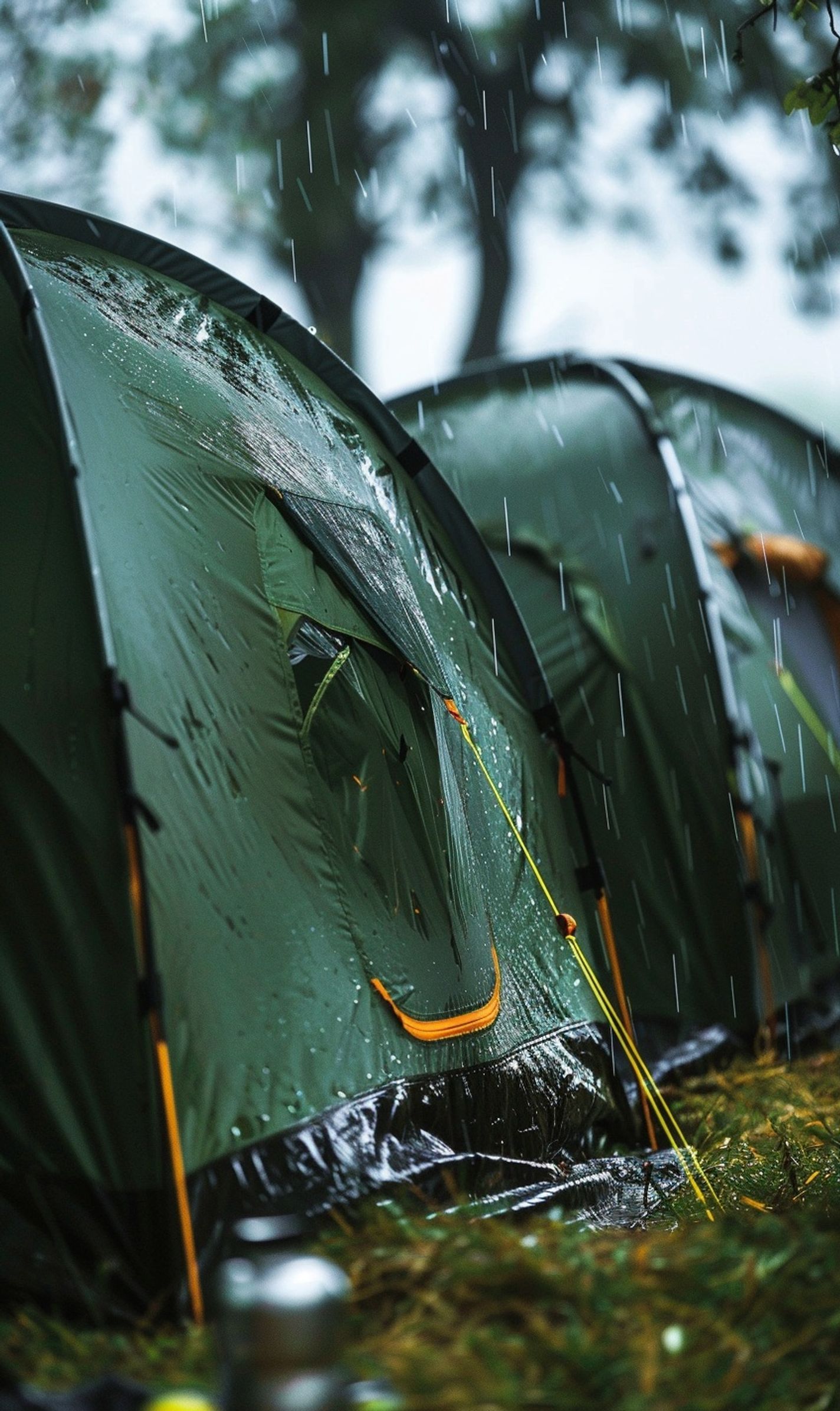
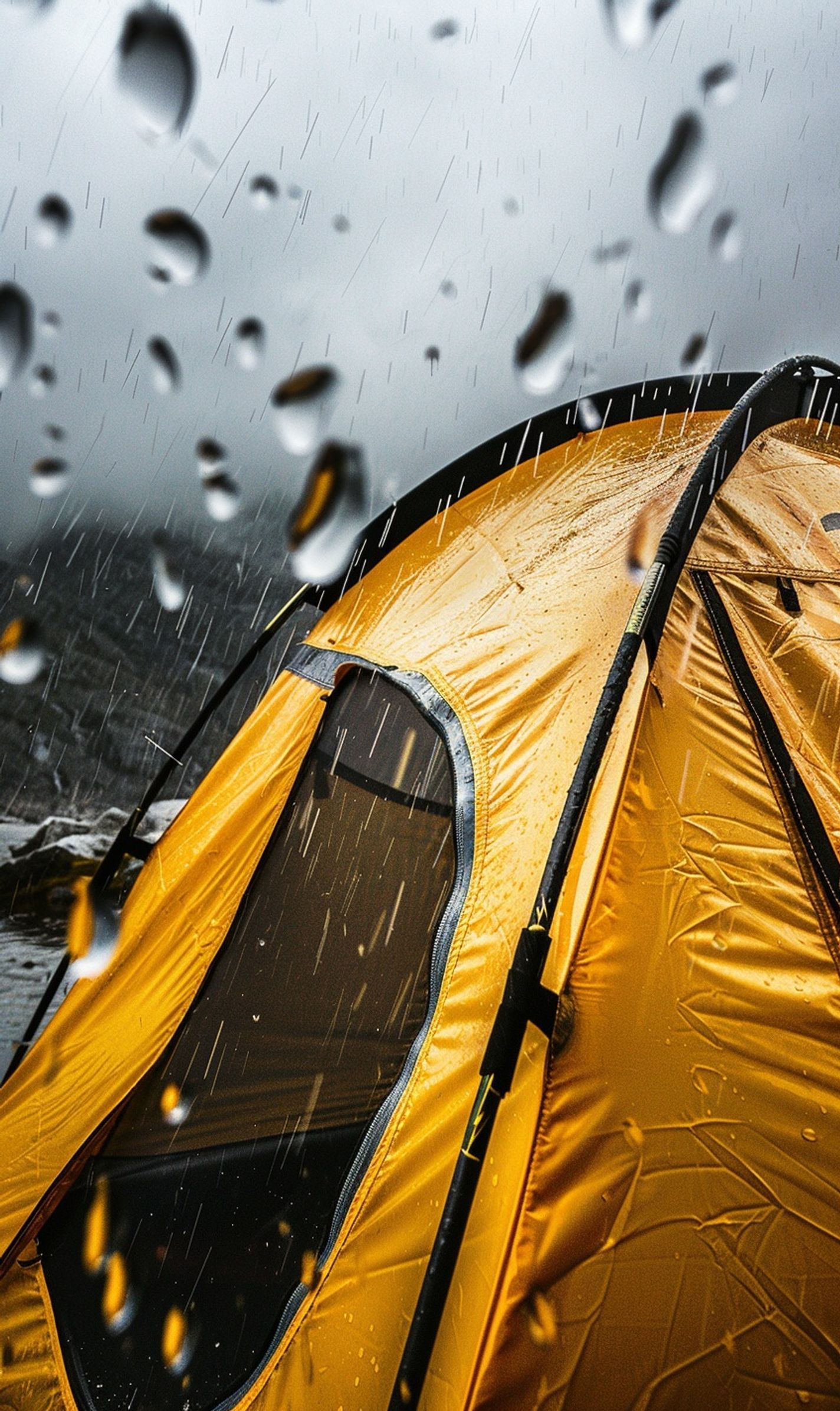
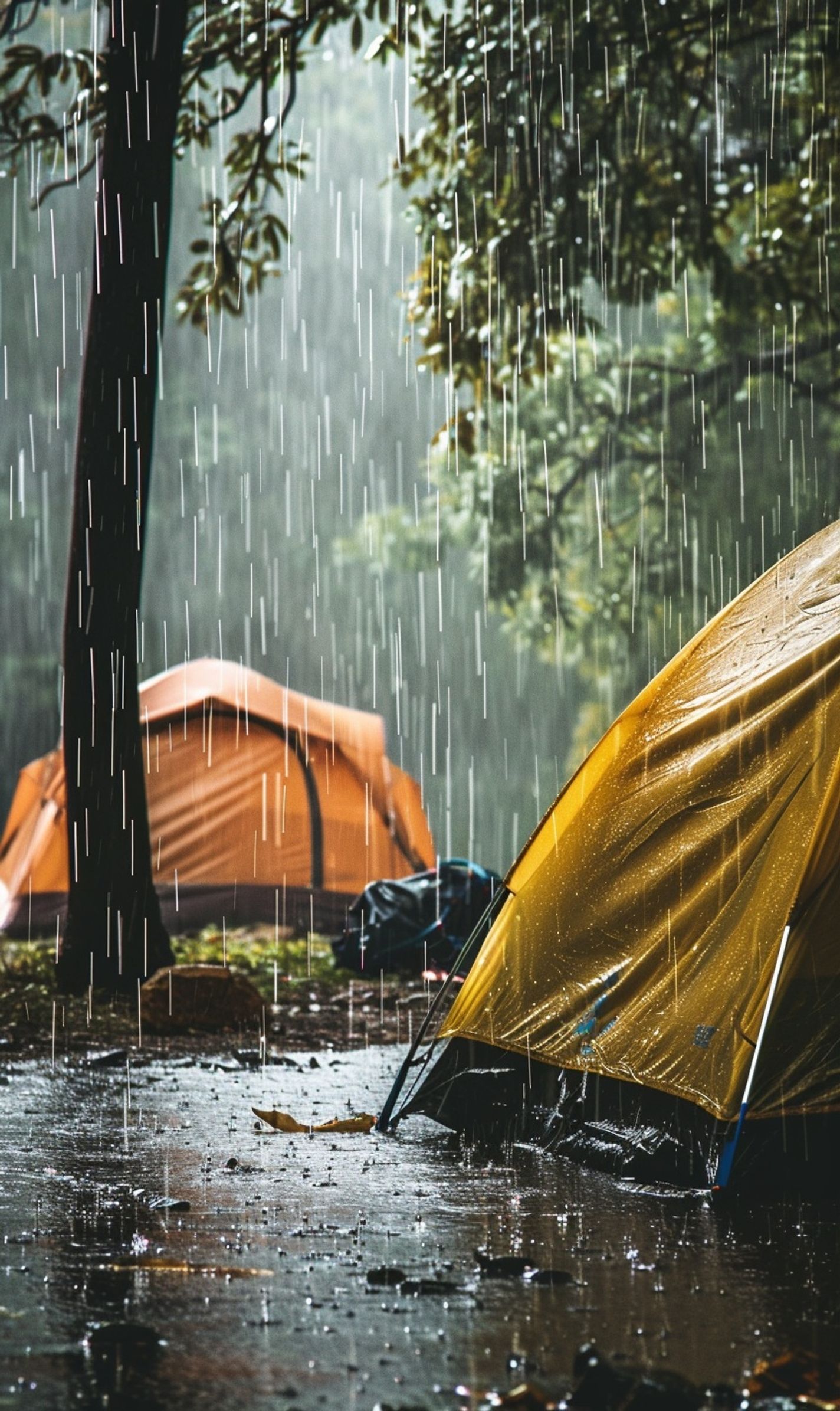
Dealing with Rain and Waterproofing Your Tent Effectively
When camping in challenging environments, rain can be your greatest foe. But fear not—you can conquer even the most torrential downpour with the suitable properties and tools. So, let’s dive into waterproofing your tent like a seasoned pro.
Sealing Cracks and Seams
Inspect your tent before each trip for signs of wear and tear. Apply seam sealant to cracks or holes to prevent water from sneaking in and ruining your night under the stars.
Invest in Quality Tarps
A good tarp can be a camper’s best friend when the heavens open up. Place a tarp underneath your tent for extra protection against moisture seeping through the ground.
Strategic Site Selection
Choose your campsite wisely. Opt for higher ground to prevent pooling water around your tent. Avoid setting up near potential runoff channels to avoid a soggy tent situation.
Remember, proper preparation is the key to staying dry when the rain starts to fall. You can confidently tackle any storm nature throws by effectively mastering the art of waterproofing your tent. So, embrace the rain, stay dry, and let the pitter-patter lull you to sleep in your cozy, waterproof haven.
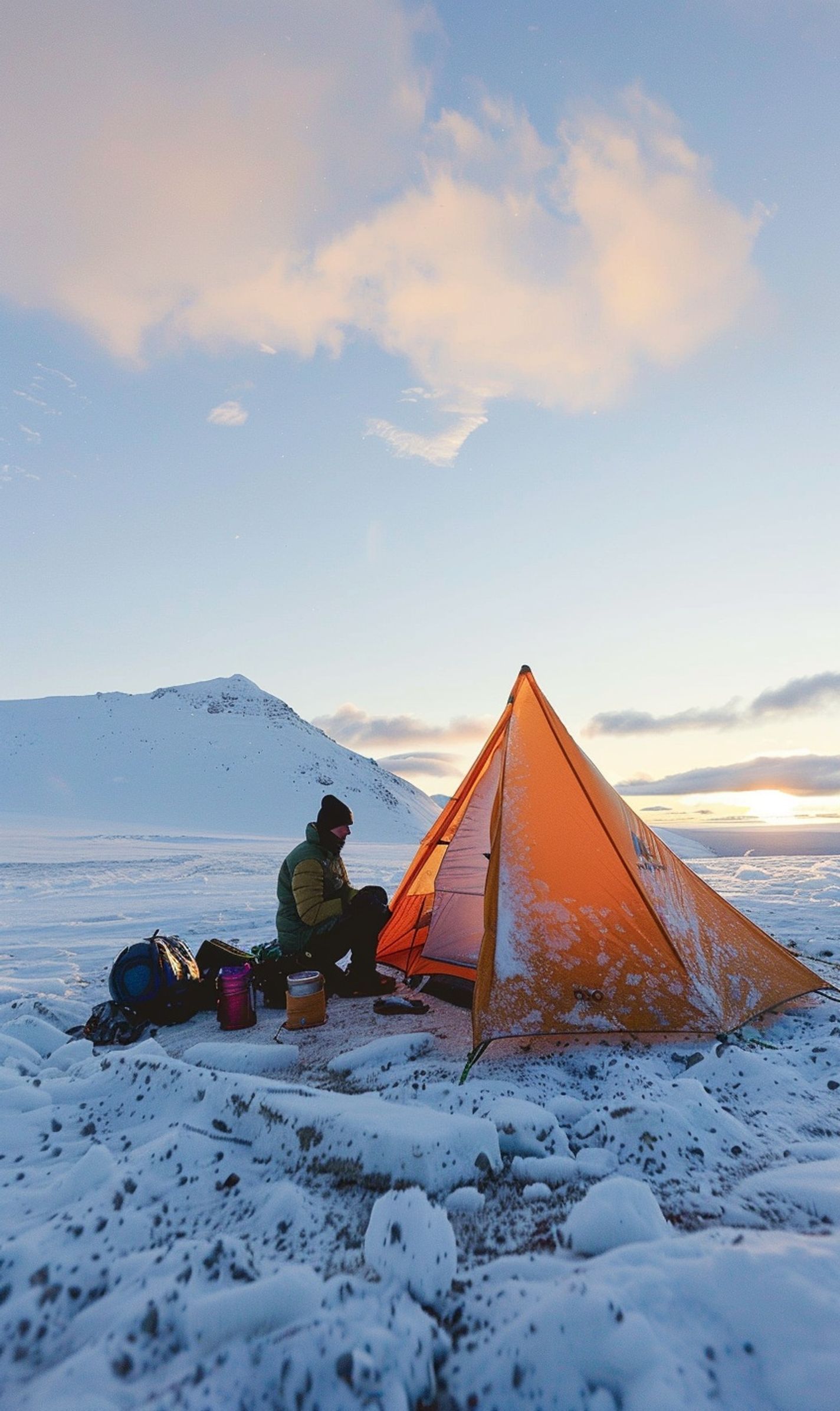
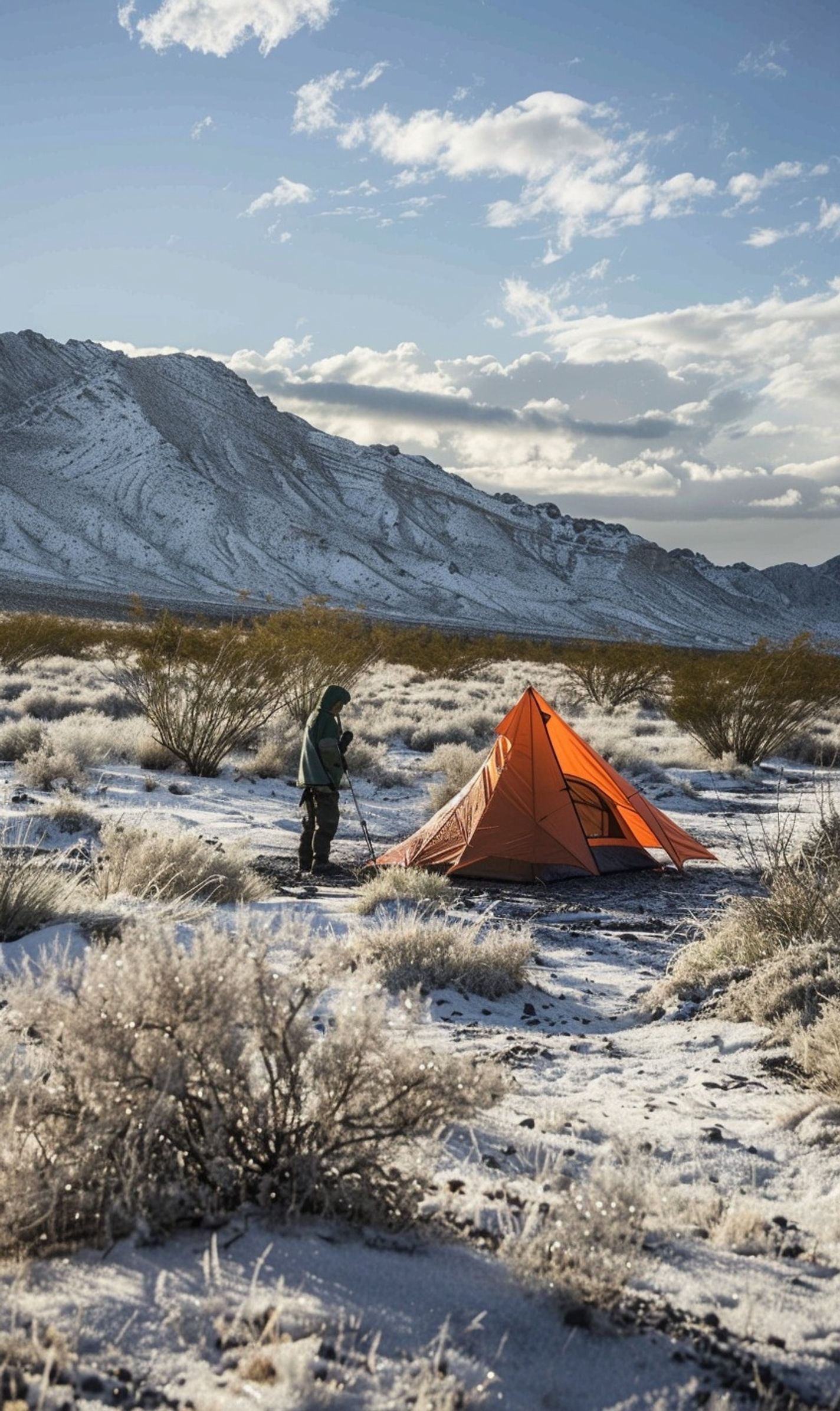
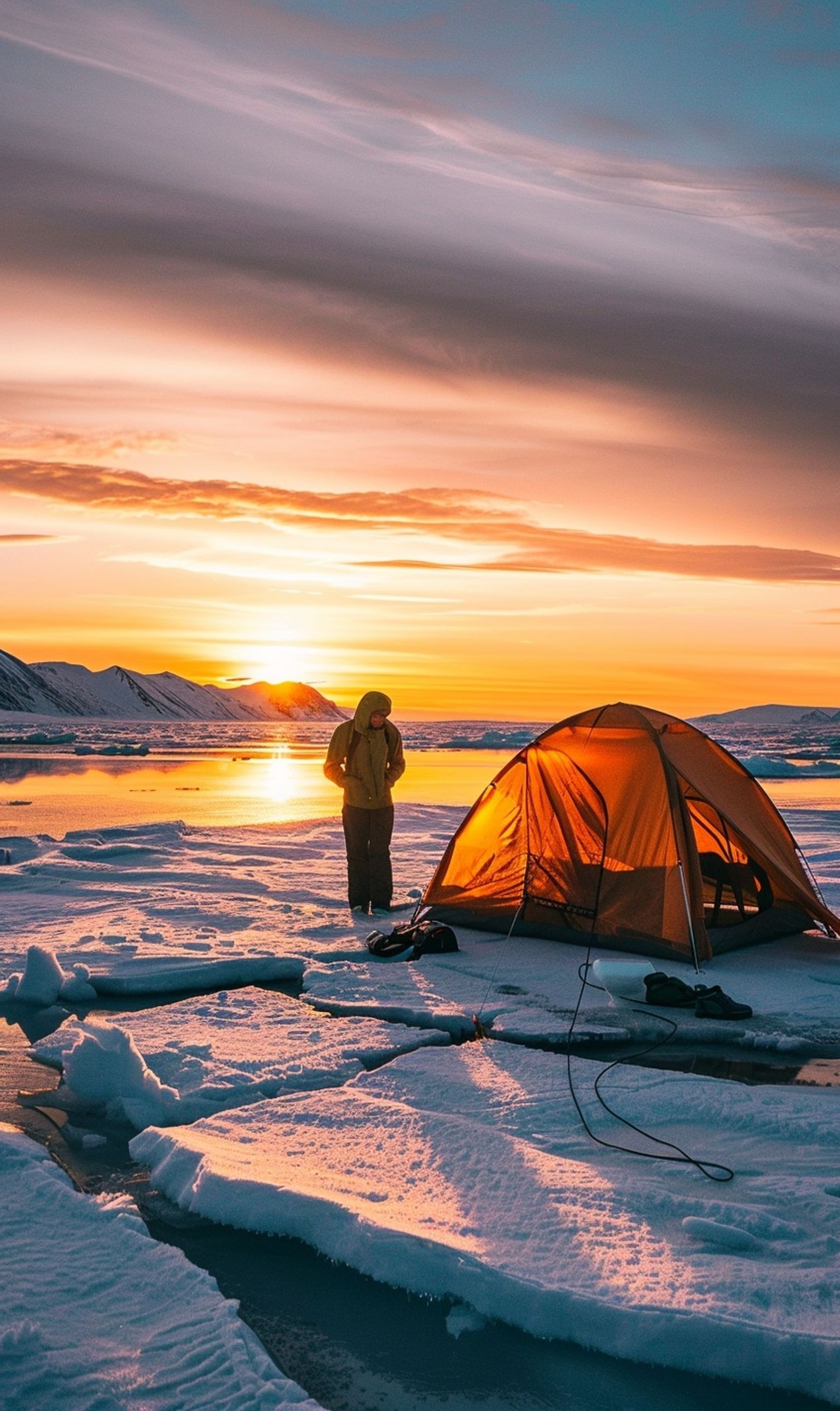
Setting Up in Extreme Environments: Snow, Deserts, and More
Regarding advanced tent setup in challenging environments like snow-covered landscapes or scorching deserts, your regular pitching techniques might not cut it. It requires a whole new set of skills to ensure your shelter can withstand the harsh conditions nature throws at it.
Adapting to Snowy Terrains
Snow camping is a thrilling but demanding experience. To effectively set up your tent in snow-covered areas, consider the following tips:
– Use snow stakes: Regular tent pegs may not hold in snow, so opt for specialized snow stakes that provide better grip.
– Pack down the snow: Before pitching your tent, tamp down the snow where your tent will go to create a stable base.
– Create windbreaks: Build snow walls around your tent to shield it from strong winds and create a more insulated environment.
Conquering Desert Conditions
Surviving in the desert requires careful planning and execution. Here is how you can set up your tent effectively in sandy landscapes:
1. Choose a flat spot: Find a level area to pitch your tent to avoid uncomfortable sleeping positions.
2. Stake it down: Use heavy-duty stakes or sand anchors to secure your tent in loose desert sand.
3. Ventilate properly: In hot desert climates, proper ventilation prevents your tent from turning into a sauna.
Adapting your tent pitching techniques to suit the environment is crucial for a successful and comfortable camping experience in extreme conditions.
While setting up your tent in challenging environments can test your skills and patience, the satisfaction of a well-pitched shelter amidst daunting landscapes is unmatched. But always prioritize safety and comfort above all else.
Conclusion
As you wrap up this blog post on mastering advanced tent setup techniques in challenging environments, it’s clear that with the right skills and knowledge, you can confidently tackle any camping adventure. From understanding the different types of tents to learning how to pitch them in various terrains, you’re now equipped to face any camping challenge that comes your way.
Remember, practice makes perfect when it comes to advanced tent setup. The more you familiarize yourself with different techniques and methods, the easier it will become to adapt to various environments and conditions. Embrace the learning process and be open to trying out new strategies to enhance your camping experience.
By honing your tent-pitching skills, you ensure a comfortable and safe shelter during outdoor escapades and gain the confidence to explore more remote and challenging camping spots. So, grab your gear, head out into the wilderness, and put your advanced tent setup knowledge to the test!
Keep pushing your boundaries, learning from each camping trip, and mastering the art of setting up a tent in challenging environments. With dedication and perseverance, you’ll soon become a pro at conquering any camping obstacle that comes your way. Happy camping!
Frequently Asked Questions (FAQs)
Q: What are some advanced tent setup techniques?
A: Advanced tent setup techniques include efficiently utilizing guy lines, properly tensioning a tent, and mastering the art of pitching a tent on rugged terrain.
Q: How can I pitch a tent in challenging environments?
A: To pitch a tent in challenging environments, you can use techniques like anchoring your tent with rocks or stakes, adjusting the angle of your tent based on wind direction, and ensuring you have a solid base to pitch on.
Q: What should I consider when setting up a tent in a windy area?
A: When setting up a tent in a windy area, consider positioning your tent with the narrow end facing the wind, using rocks or heavy items to secure your tent, and reinforcing the guy lines for added stability.
Q: How can I improve ventilation in my tent setup?
A: To improve ventilation in your tent setup, you can open windows and vents, avoid blocking airflow with gear or clothing, and consider setting up your tent in a breezy location.
Q: What is the importance of practicing advanced tent setup techniques?
A: Practicing advanced tent setup techniques is crucial for ensuring your safety and comfort in challenging outdoor conditions and prolonging the lifespan of your tent.
Q: Can I use advanced tent setup techniques for all types of tents?
A: Yes, advanced tent setup techniques can enhance the stability and performance of various types of tents, including dome tents, tunnel tents, and even hammock tents.







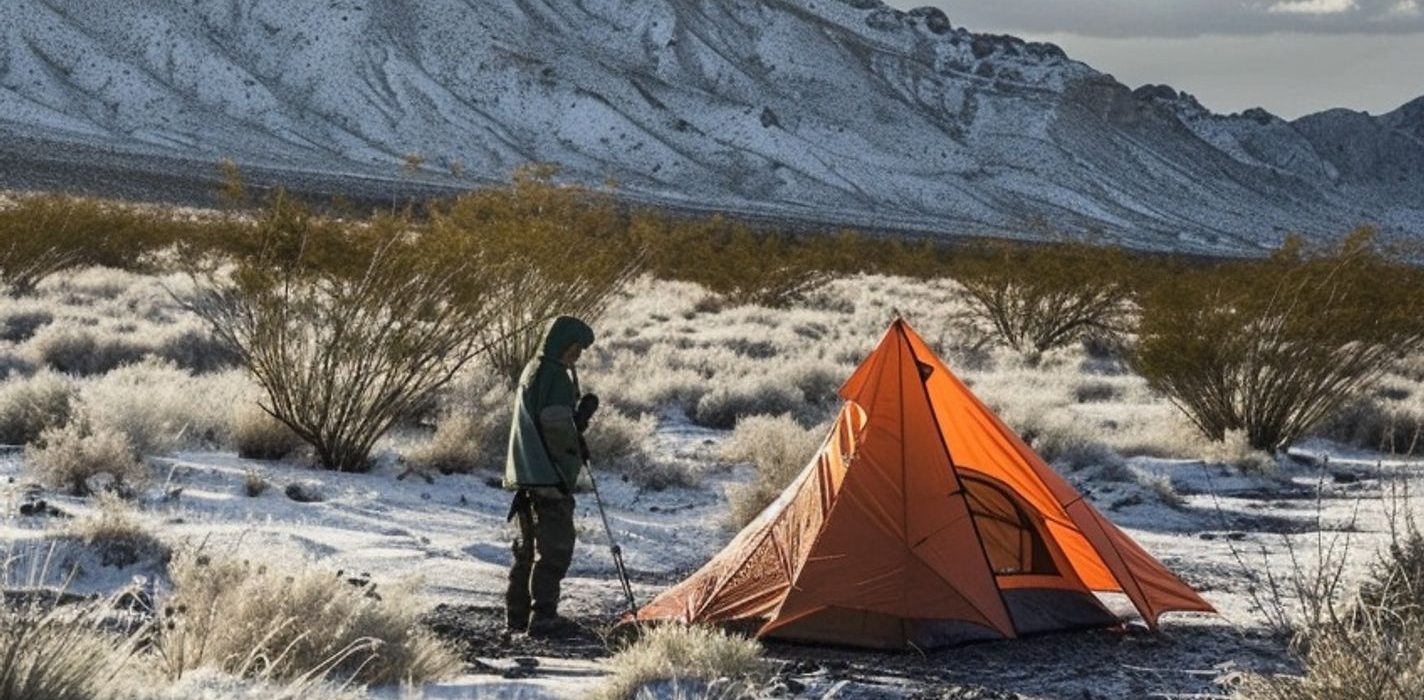


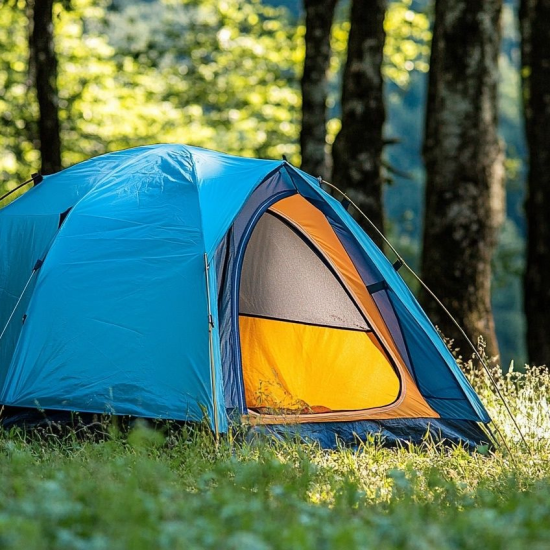
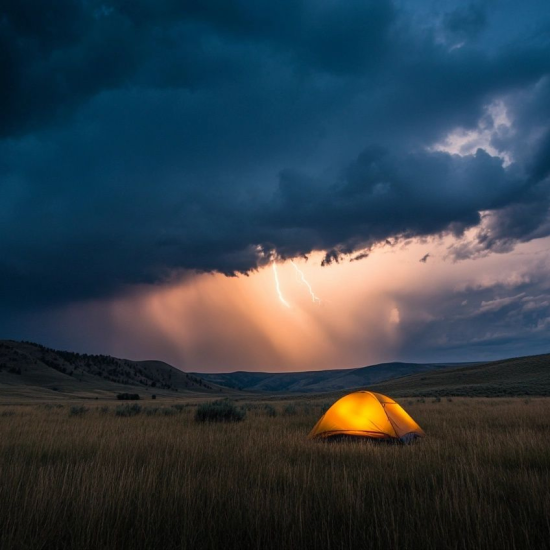
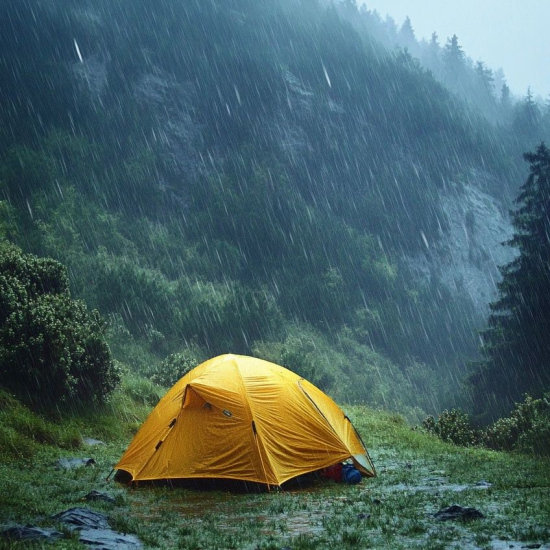
No Comment! Be the first one.